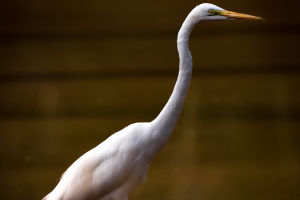Measuring between 68 and 92 cm in length and weighing between 1.98 and 2.75 kilograms, the demoiselle crane boasts a distinguished appearance.
Its gray head, complemented by blue-gray neck and body feathers, creates a striking contrast against the backdrop of its vibrant red irises and yellow-green beak.
Notably, the black side of its head, front neck, feet, and toes, along with the white back of the eyes and ear feathers, further accentuate its captivating features. Remarkably, its throat and front neck feathers extend into a coir shape, lending the bird its distinctive name.
Distinguishing between genders, male demoiselle cranes typically exhibit larger body dimensions, with lengths ranging from 76 to 92 cm and weights between 2.32 and 2.45 kilograms. In contrast, females are slightly smaller, measuring between 68 and 80 cm in length and weighing between 1.98 and 2.75 kilograms.
Among the 15 crane species worldwide, including well-known varieties like the white crane and the red-crowned crane, the demoiselle crane stands out as the smallest. Despite its diminutive stature, these cranes, measuring less than 1 meter in length and weighing less than 3 kilograms, possess remarkable resilience and energy.
Inhabiting a diverse range of environments such as open plain grasslands, meadow swamps, reed ponds, and river valleys, demoiselle cranes demonstrate remarkable adaptability. They are known to frequent farmlands, particularly during autumn and winter, and can be found inhabiting plateau areas at elevations of up to 5,000 meters.
During migration, demoiselle cranes embark on arduous journeys, facing numerous challenges and hazards along the way. Divided into three distinct populations, these cranes navigate varied migration routes, with some populations flying over the formidable Himalayas en route to their wintering grounds.
The demoiselles, residing in Eastern Europe and Western Asia, undertake a relatively straightforward journey to Africa for the winter. Meanwhile, the central Asian population migrates to South Asia, avoiding the Himalayas by flying along its western flank. In contrast, the eastern Asian demoiselles, originating from regions like northeast China and Inner Mongolia, face the daunting task of traversing the Himalayas, with some even navigating perilously close to Mount Everest to reach their wintering destinations.
Despite the challenges of migration, demoiselle cranes remain resilient and resourceful, epitomizing the spirit of endurance in the face of adversity. Timid and alert by nature, they exhibit a tendency to shy away from human presence, preferring solitude or familial companionship during breeding seasons. Adorned with adorable brown-yellow fluff, their chicks add a touch of innocence and charm to their familial bonds.
Every autumn, demoiselle cranes embark on their migratory journey to wintering grounds, a testament to their indomitable spirit and unwavering resilience. Despite the trials and tribulations encountered along the way, these magnificent birds thrive, embodying the essence of survival amidst the vast expanse of the natural world. With a large and stable global population, the demoiselle crane stands as a testament to nature's resilience and the enduring beauty of the avian kingdom.


